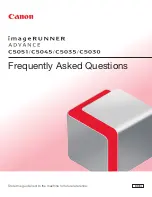
PCL
2-61
Command Structure
Most PCL emulation commands have the following structure:
ESC
& a # C
Spaces have been added to this example for readability. The command parameter
variables are indicated by a number sign (#).
Command Parameters
A command parameter sets the value for a command. This value stays constant until
either a different value resets the command or a command resets the printer to the
default values. For example, after the printer receives a command that selects a right
margin beginning at column 63, the right margin of each printed page begins at
column 63. That margin stays constant until a right margin command with a different
value resets it or until the printer is reset.
Parameters for each command are listed in the command tables beginning on
page 2-63. Use the Symbol Set Tables to determine the decimal or hexadecimal value
for each parameter. To determine a decimal or hex value, first locate the value of the
parameter you require in the Symbol Set Table. The decimal value is the value shown
in the bottom of the cell or box with that parameter. To find a hex value, go straight up
the grid from the desired parameter and read the value in the top heading. This is the
first character of the hex value. Next, go straight across the grid to the left of the
parameter and read the value in the left column heading. This is the second character
of the hex value. For example,
ESC
(
←
) is coded 1B in Hex and 27 in decimal. (Any one
of the three values
←
, 1B, or 27 might be used in your application. Read your
documentation to determine which to use.) The example on the following page sets
the pitch of the primary font to 16.66 characters per inch.
Table 2-24: Description of Command Structure
Element
Description
ESC
Decimal 27 or hex 1B
&
Parameterized character from American National Standard Code for Information
Interchange (ASCII) table (range 33 to 47 decimal)
a
Group character from ASCII table (range 96 to 126 decimal) that specifies a group
type of control
#
Decimal character string value within specified numeric ranges; may be preceded by
a + or – sign and contain a decimal point
C
Termination character from ASCII table (range 64 to 94 decimal)
















































